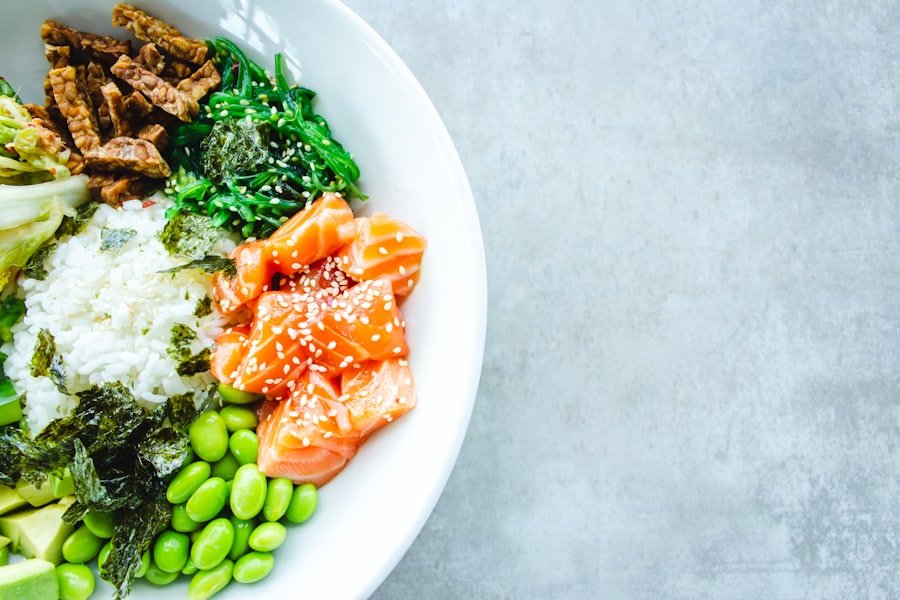The ketogenic diet, commonly referred to as the keto diet, is a high-fat, low-carbohydrate eating plan designed to shift the body’s metabolism away from carbohydrates and towards fat. The primary goal of this dietary approach is to induce a state of ketosis, where the body becomes highly efficient at burning fat for energy. In a typical keto diet, the macronutrient breakdown consists of approximately 70-75% fats, 20-25% protein, and only about 5-10% carbohydrates.
This stark reduction in carbohydrate intake forces the body to utilize fat as its primary fuel source, leading to various metabolic changes. The origins of the keto diet can be traced back to the early 20th century when it was developed as a treatment for epilepsy, particularly in children who did not respond to conventional medications. Over the years, it has gained popularity not only for its therapeutic benefits but also for its potential in weight loss and improved metabolic health.
The diet encourages the consumption of whole, unprocessed foods while minimizing sugar and starches, which are typically abundant in a standard Western diet. As individuals embark on this dietary journey, they often experience a range of physiological changes that can significantly impact their overall health.
Key Takeaways
- The Keto Diet is a high-fat, low-carbohydrate diet that aims to put the body into a state of ketosis, where it burns fat for fuel instead of carbohydrates.
- Benefits of the Keto Diet include weight loss, improved blood sugar control, and increased mental clarity and focus.
- Tips for starting the Keto Diet include gradually reducing carbohydrate intake, staying hydrated, and monitoring electrolyte levels.
- Foods to eat on the Keto Diet include meat, fish, eggs, low-carb vegetables, and healthy fats like avocado and olive oil.
- Foods to avoid on the Keto Diet include sugar, grains, fruit, starchy vegetables, and processed foods.
- Keto-friendly recipes include cauliflower rice, zucchini noodles, and fat bombs made with coconut oil and nuts.
- To stay on track with the Keto Diet, it’s important to plan meals ahead, track macronutrient intake, and find support from others following the diet.
- Potential risks and side effects of the Keto Diet may include nutrient deficiencies, keto flu, and an increased risk of heart disease if high amounts of unhealthy fats are consumed.
Benefits of the Keto Diet
One of the most compelling benefits of the keto diet is its effectiveness in promoting weight loss. By drastically reducing carbohydrate intake, the body begins to burn stored fat for energy, leading to a decrease in body weight and fat percentage. Numerous studies have shown that individuals following a ketogenic diet often experience more significant weight loss compared to those on low-fat diets.
This is partly due to the satiating nature of fats and proteins, which can help reduce overall calorie intake by curbing hunger and cravings. In addition to weight loss, the keto diet has been associated with improved blood sugar control and insulin sensitivity. For individuals with type 2 diabetes or prediabetes, adopting a low-carbohydrate lifestyle can lead to better glycemic control and reduced reliance on medications.
Research indicates that the keto diet can lower blood sugar levels and improve markers of metabolic syndrome, making it a potentially beneficial approach for those struggling with insulin resistance. Furthermore, some studies suggest that the ketogenic diet may have neuroprotective effects, potentially benefiting individuals with neurological disorders such as Alzheimer’s disease and Parkinson’s disease.
Tips for Starting the Keto Diet

Embarking on the keto diet requires careful planning and preparation to ensure success. One of the first steps is to educate oneself about the macronutrient ratios and food choices that align with this dietary approach. Keeping a food diary or using a mobile app can be helpful in tracking daily carbohydrate intake and ensuring that one stays within the recommended limits.
It’s also essential to gradually reduce carbohydrate consumption rather than making abrupt changes, as this can help mitigate potential side effects such as the “keto flu,” which may occur during the initial transition period. Another crucial tip for starting the keto diet is to focus on whole foods rather than processed options. Emphasizing nutrient-dense foods such as avocados, nuts, seeds, fatty fish, and low-carb vegetables can provide essential vitamins and minerals while keeping carbohydrate intake low.
Meal prepping can also be beneficial; preparing meals in advance helps avoid last-minute decisions that may lead to non-keto choices. Additionally, staying hydrated and ensuring adequate electrolyte intake is vital during this transition phase, as the body may excrete more water and electrolytes when carbohydrates are restricted.
Foods to Eat on the Keto Diet
| Food | Net Carbs (g) per 100g | Fat (g) per 100g | Protein (g) per 100g |
|---|---|---|---|
| Avocado | 2 | 15 | 2 |
| Spinach | 1 | 0.4 | 2.9 |
| Broccoli | 4 | 0.4 | 2.8 |
| Salmon | 0 | 13 | 20 |
| Coconut Oil | 0 | 100 | 0 |
When following a ketogenic diet, it’s important to prioritize foods that are high in healthy fats while being low in carbohydrates. Avocados are an excellent choice due to their high monounsaturated fat content and fiber, which aids in digestion and promotes satiety. Nuts and seeds, such as almonds, walnuts, chia seeds, and flaxseeds, are also great options as they provide healthy fats along with protein and essential nutrients.
Fatty fish like salmon, mackerel, and sardines are rich in omega-3 fatty acids and are encouraged on the keto diet for their anti-inflammatory properties. Additionally, non-starchy vegetables such as spinach, kale, broccoli, and cauliflower are low in carbohydrates while being high in fiber and vitamins. Dairy products like cheese, heavy cream, and full-fat yogurt can also be included in moderation, providing both flavor and fat content essential for maintaining ketosis.
Eggs are another staple food on the keto diet; they are versatile, nutrient-dense, and an excellent source of protein.
Foods to Avoid on the Keto Diet
To successfully adhere to a ketogenic lifestyle, certain foods must be avoided due to their high carbohydrate content. Sugary foods are at the top of this list; this includes candies, pastries, sodas, and even many fruit juices that can spike blood sugar levels. Grains such as wheat, rice, oats, and corn should also be eliminated since they contain significant amounts of carbohydrates that can hinder ketosis.
Starchy vegetables like potatoes, sweet potatoes, and corn are not suitable for a keto diet due to their high carbohydrate content. Additionally, many processed foods contain hidden sugars and unhealthy fats that can derail progress; it’s crucial to read labels carefully. Fruits should be limited as well; while berries can be consumed in moderation due to their lower sugar content compared to other fruits, most fruits like bananas, apples, and grapes should be avoided or minimized.
Keto-Friendly Recipes

Creating delicious meals on a ketogenic diet doesn’t have to be challenging; there are numerous recipes that cater to this lifestyle while satisfying taste buds. One popular dish is zucchini noodles with pesto sauce; spiralized zucchini serves as a low-carb alternative to traditional pasta. Tossing these noodles with homemade basil pesto made from fresh basil, garlic, pine nuts, olive oil, and Parmesan cheese creates a flavorful meal that is both satisfying and compliant with keto guidelines.
Another favorite is cauliflower fried rice. By using riced cauliflower instead of traditional rice, one can enjoy a hearty dish without the carbs. Sautéing cauliflower rice with vegetables like bell peppers and peas along with scrambled eggs and soy sauce creates a deliciously savory meal that fits perfectly within a ketogenic framework.
For dessert lovers, keto-friendly cheesecake made with almond flour crust and sweetened with erythritol or stevia offers a guilt-free indulgence that satisfies sweet cravings without compromising dietary goals.
How to Stay on Track with the Keto Diet
Maintaining adherence to the keto diet can be challenging over time; however, several strategies can help individuals stay on track. One effective method is to establish clear goals and track progress regularly. Setting specific targets for weight loss or health improvements can provide motivation and accountability.
Utilizing social media or joining online communities focused on keto can also offer support from others who share similar goals. Meal planning plays a crucial role in staying committed to the keto lifestyle. By preparing meals ahead of time and having keto-friendly snacks readily available, individuals are less likely to succumb to temptations or make impulsive food choices.
Additionally, experimenting with new recipes can keep meals exciting and prevent boredom from repetitive eating patterns. Staying informed about nutritional information and continuously learning about new foods or recipes can further enhance one’s commitment to this dietary approach.
Potential Risks and Side Effects of the Keto Diet
While many people experience positive outcomes from following a ketogenic diet, it is essential to be aware of potential risks and side effects associated with this eating plan. One common issue is the “keto flu,” which may occur during the initial transition phase as the body adapts to burning fat instead of carbohydrates. Symptoms can include fatigue, headaches, irritability, nausea, dizziness, and muscle cramps.
These symptoms typically subside within a few days but can be uncomfortable for some individuals. Long-term adherence to a ketogenic diet may also raise concerns regarding nutrient deficiencies if not carefully managed. Since certain food groups are restricted or eliminated entirely, individuals may miss out on essential vitamins and minerals typically found in fruits and whole grains.
It’s crucial for those on a keto diet to ensure they are consuming a variety of nutrient-dense foods and consider supplementation if necessary. Additionally, individuals with certain medical conditions or those taking specific medications should consult healthcare professionals before starting a ketogenic diet to avoid potential complications or adverse effects on their health.